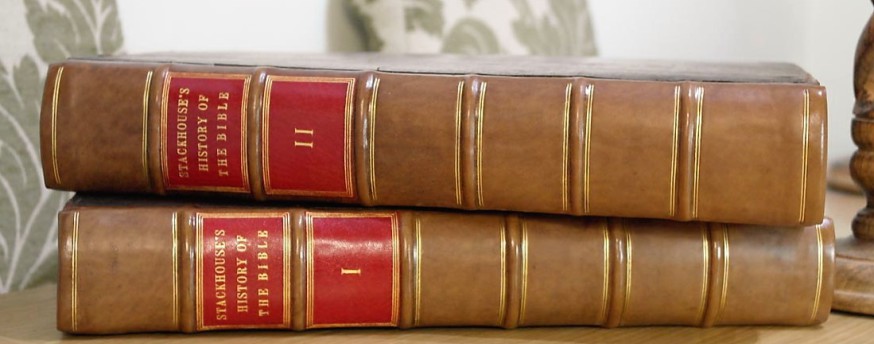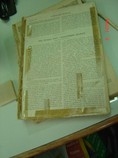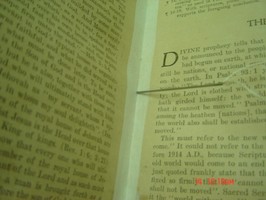VERY THIN BIBLE PAPER, CAN IT BE REPAIRED?
REPAIR OF BIBLE PAPER
Do your bibles pages need repairing? Have some of the pages come away or are there tears that make it hard to use?
Then, PLEASE, do not use sellotape!! It is absolutley the worst thing to do. Sellotape adhesive will stain the paper and the plastic carrier will harden. It really is lacking the finesse required for thin bible paper.
So what are the choices? Well the ultimate is to have a professional conservator repair your thin bible pages with thin, quality japanese tissue, such as KOZO or GAMPI and very dry rice paste.
However there is a compromise, which would suit most people's budget and manual dexterity. DOCUMENT REPAIR TAPE. This made from good quality thin tissue and a pressure sensitive adhesive coating. Because it is made from thin tissue it will not be cumbersome on bible paper and is transparent. It is not archival in the full sense, but it is as neutral as one can get, commercially ready made, easy to apply.
Be aware though, that applied to yellowing or mechanical wood pulp paper, the tape will become darker as the adhesive will react with the lignen (a naturally occuring ingredient found in wood) left over in the paper.However for bible paper this should not happen as it is made from good quality chemical wood fibre, with the lignen washed out.
You can obtain a small amount from us at cost of £1.50 per metre length, free P&P if ordered with other items otherwise £2.00 P&P.
Sellotape - Can it be removed?
A customer's copy of a 1930's magazine plastered with sellotape but can they be removed? In theory yes, in practise, that depends on the type of paper, carrier and adhesive. Removability could only be confirmed after we had done some basic investigations.
From our investigations there appeared to be at least four different types of sellotape, most likely from the 1950's, 60's, 70's and the late 80's or early 90's. Sellotape is constantly changing with manufacturers forever changing the carrier and adhesive recipes. Therefore each period sellotape has it's own recipe of adhesive and carrier. Having worked out different strategems for each type of sellotape, the various approaches were carefully observed and noted. Thus each piece was removed according to it's own requirements.
What about the remaining sticky residue? This has to be romoved otherwise more damage will occur. We tried a trio of techniques starting with the simplest and working towards the complex. Thankfully, not all the different types of sellotape left a tacky residue but we found the earliest tapes had the most.
What of residual staining? Usually the older tapes tend to leave darker stains. Although we were able to "lighten" most of the stains by removal of residual stickiness, the majority did leave some sort of outline. Complete removal of stains can be achieved with the use of exotic solvents and complex extraction methods but this customer did not feel it necessary. In fact the stains tell a story!
After removal of the sellotape, the tears were strengthened with 9 gsm manilla fibred tissue and wheat starch paste. The outer and inner folds of the each magazine were reinforced with a strip of 24 gsm Japanese hand made archival quality tissue. Then each magazine was hand sewn into an individual archive folder. Finally a box was made to house the collection.




